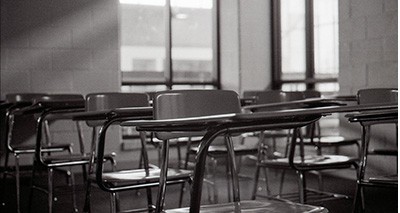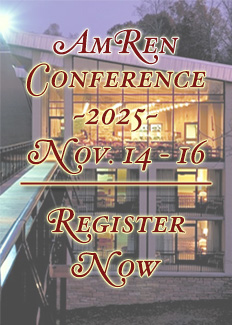A White Teacher in a Multicultural World
Ben Sullivan, American Renaissance, June 1, 2022

Photo credit: Don Harder/Flickr (CC BY-NC 2.0)
This is part of our continuing series of accounts by readers of how they shed the illusions of liberalism and became race realists.
I can say growing up in the suburb of a small American city that I had not had much experience with blacks. The experiences that I had were relegated to the few instances of conversing in study hall with one or two of the few blacks who attended the school. They were not problematic in any way, and living in suburban America, they worked hard to adapt to the environment in order to avoid the curse of being shunned in high school.
When I got my teaching degree, I soon found it was next to impossible to find a job. I ended up filling a position at the only school where I could find a vacancy — at a majority black high school. I did not understand why people did not want to work there, nor did I understand the complexities of interracial relations. To summarize the experience, I might say that only about 15 minutes of every 90-minute period allowed for any learning. The rest of the time was spent getting students to focus.
When I gave my first evaluation, the entire class failed. Then, I allowed the students to retake the same evaluation using their notebooks. The entire class failed again. Then I allowed the students to take the same test again using their textbooks. Even still, the entire class failed. Finally, I allowed the entire class to take the test again using their smartphones . . . the entire class failed. The administration was always pressuring the teachers for results. The administration was also all black. I asked for materials that were on the reading level of the students (3rd–5th) and they refused to provide the materials. I ended up purchasing the necessary materials with my own money.
My 55 black students could be divided into four groups:
- Good kids who desperately wanted to get out of the ghetto (about 4 students)
- Decent kids who, with a bit of effort, could perhaps rise above and become good citizens (4 students)
- Bad kids who regurgitated what they knew white teachers wanted to hear (7 students)
- Ghetto thugs (40 students)
In my time teaching in one of the worst ghettos in the United States, I was hospitalized twice with what I thought was a heart attack. Both times, it turned out I was having a panic attack. Teachers were constantly quitting because they couldn’t take it, and black teachers quit at the highest rate.
As a school in the hood, we had a strict uniform policy. That policy was gradually tightened as gang affiliations increased. First, it was shoe color; once the rules changed to all-black shoes, it was the laces, the socks, the belts, the bracelets, the hair ties, the backpacks; and once the administration thought they had eliminated all of the possibilities for gang colors, the students started dying their teeth red and blue.
The gang affiliations would have gone unnoticed if the school did not have frequent “walk-by shootings.” Walk-by shootings are like drive-by shootings, only without the car. After my first walk-by, I waited for the police to arrive. They never did. Gang members would stalk the fences of the school looking for rival gang members to shoot at. The school’s armed security guard frequently had to chase these individuals away. On three occasions, I was close enough to a walk-by to fear that a bullet might hit me.
Riots were fairly common as well, since friend-groups supported their members without exception. As such, what might begin as a normal one-on-one fight could escalate very quickly. For instance, two girls who started fighting over a boy would draw in their friends, and the friends of their friends, and so on and so forth. After the first major riot, the policy became for teachers to put their bodies between the fighting students and the students coming to their aid. I think the only reason we made it out alive was because we made eye contact with each of the students and talked them down as they made their way in. The familiarity or respect prevented us from being absolutely pummeled by the wave of students who were making a move to join the fray.
Things I saw:
- Students robbing grocery stores in uniform
- Students talking about their grandmothers giving oral sex to animals for crack
- Students having sex in empty classrooms
- Students not understanding that the world was not in black and white before color photographs
- Students with extremely intimidating fathers trying to make the grade but not able to comprehend basic depth of knowledge questions that a first grader would be able to achieve
- Boys hitting girls
- Open drug use
- Overt racism between students who called one another “stupid Africans” and made clicking sounds to mimic African languages (all these students were African-American, not African immigrants)
- On the last day of school some of the few good students showed me the bathroom. There were no toilets left. The toilets had been smashed into rubble. The sink had been smashed into rubble. I questioned the black principal on this and he said, “Why do you think I told you not to let them go to the bathroom?”
After three years, I was moved to a middle school where a majority of the students were Jewish, Persian, or Hispanic. There were no problems there. The Jewish and Persian kids understood the lessons immediately. There was no need for remediation. The Hispanic kids had some trouble and lagged a bit, but not far enough to derail a lesson, and they were respectful enough not to keep a lesson from progressing. I eventually left that job, but only for financial reasons.
The following year, I was hired at one of the most prestigious schools in the district. The school was a quarter black, a quarter Hispanic, a quarter Asian, and a quarter white. All the students were kept on equal standing. The school ranged from grades 6–12. A new problem presented itself. 9th grade blacks were failing down to the 6th grade level. 6th grade students were being exposed to 9th grade nonsense. A class with a dozen 6th grade white, Hispanic, and Asian girls would have to tolerate the obscene behavior that 9th grade blacks had to offer. In their grade-level courses, the black students were highly disruptive. They would show up late. They would ask to use the bathroom frequently. They would stop the lesson whenever they could. The other students would cry “please make them stop.” But we could not remove them from the classroom because it would be a violation of their civil rights.
The school had issues with bathroom privileges. Black students tended to destroy the bathrooms. They would smear feces in the cracks of the walls, smash the sinks in and clog the toilets with whatever they could find. The students knew who the culprits were but would not say anything. When walking through the schoolyard, one would see Asian, Hispanic, and white kids sitting together. But black kids sat with black kids. Many students play video games on their phones at lunch, but even then, there were differences. The white, Hispanic, and Asian students tended to play puzzle games that required problem solving skills. The black students played sports games or violent ones, such as Mortal Kombat.
By their senior year, the whites, Asians and Hispanics had grown to detest their black classmates. They saw them as disruptive and ignorant thieves. I can remember another teacher sitting in a meeting and saying, “Remember Martin Luther King? ‘Judge me not by the color of my skin but by the content of my character?’ He probably should have left that last part out.” That about sums it up.
If you have a story about how you became racially aware, we’d like to hear it. If it is well written and compelling, we will publish it. Use a pen name, stay under 1,200 words, and send it to us here.
















